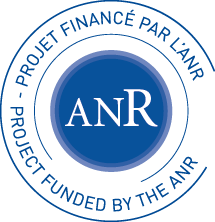PopSycle
Population Synthesis for Clusters and Galaxies
The project
Age-dating and metallicity estimates become crucial when studying the assembly of galaxy components. Among those components, globular clusters (GCs) are of particular interest. GCs are present around essentially all galaxies, and there are still many open questions about their formation and evolution. Today, we are facing a paradoxical situation. While observations are reaching millimagnitude accuracy, the color predictions of SPS models from different expert authors reach differences larger than ~5% and no model as yet has been found that reproduces the well-defined multi-waveband energy distributions of globular clusters in a statistically acceptable way. This prevent us from exploiting the near-future survey data at the level expected from each of the models taken by itself. Also, results from optical and NIR analysis still give inconsistent results. Considering that several future telescopes will preferentially observe at NIR wavelengths (e.g. JWST, or the European ground-based ELT), this is a serious concern. Based on resolved studies nearby, it has become clear that GCs in fact host stars with a variety of detailed surface chemistries, as a result of mixing processes inside stars on one hand and of global self-enrichment processes in the clusters on the other. The new degrees of freedom make the task of understanding resolved stellar color-magnitude diagrams a challenge, and of course add to the difficulty of interpreting integrated spectra of old populations in general.
Our project aims at contributing to the much needed improvement of SPS models (from the NUV to the NIR), with globular clusters and early type galaxies as primary validation targets. The quite unique character of our approach is that we join the efforts of experts in stellar physics with those of experts in the observation and analysis of empirical spectra and energy distributions of stellar populations; We will also expand our collection of empirical reference energy distributions and multiwaveband spectra. Starting from models for stellar evolution at GC-specific compositions, that will include new mixing processes to reproduce the varying surface abundances of stars along an isochrone, via empirical and synthetic spectral libraries that extend into the near-infrared, we will determine which systematic effects allow us to reproduce both the color-magnitude diagrams of resolved globular clusters, and the globular cluster energy distribution seen in various environments in the universe. We will provide spectrophotometric predictions based on our best models, advice for the analysis of galaxy light with respect to GC light, and revisit cluster formation scenario.
